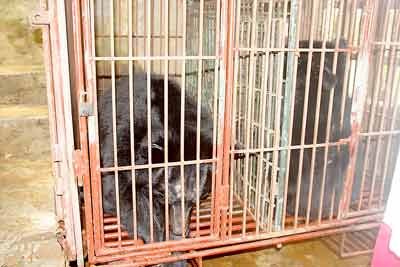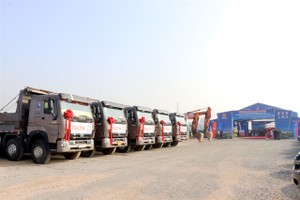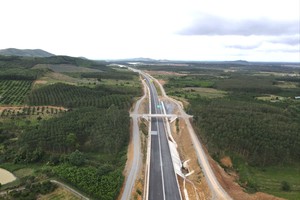Nghe An Province is one of a few provinces across the country where bears are kept in cages most because of high profits. However, as the demand for bear bile has dropped recently, along with tightened regulations on control and protection for bear, the number of bears kept in cages has reduced swiftly. Unfortunately, bears were not released into the wild but sent to slaughterhouses for bear bone glue.

In previous years, keeping bears for bile was considered as a trendy industry of many households in Nghe An Province. During that time, the price of bear bile sometimes rose to VND200,000-300,000 per cubic centimeter. Data by the Department of Forest Rangers of Nghe An Province shows that there were more than 300 bears which were attached with monitor microchips in 2005, not including those which were kept illegally.
Mr. Th., a bear keeper in Yen Thanh District, said that in 2003 he spent VND10 million for two bear cubs. Thanks to good care, the two bears grew quickly and healthily and gave lots of bile. Bear bile was extracted three times each year. He had professional extractors get bear bile for him which cost him VND1.2-1.5 million each time. Excluding expenses, each bear yielded an average profit of VND3-4 million per month.
Meanwhile, Mr. N., a bear keeper in Quynh Luu District, said that from 2001 to 2010, he had been sold 5-7 cubic centimeters of bear bile every day. With a lowest price of VND120,000-150,000 per cubic centimeter, he had earned a large amount of money from keeping bears.
In Nghe An Province, bears were kept most in Quynh Luu District. There were up to 150 bears in 2005. However, the number of bears decreased to 76 in 2010 and to 52 in 2014.
Mr. N. complained that the price of bear bile had dropped to VND15,000-20,000 per cubic centimeter but bear bile was unsalable so bear keepers had to store bear bile in fridges for years.
When the price of bear bile fell, bears were neglected. Many bears were dead due to lack of good care, said Mr. V, a farmer in Quynh Luu District. He also revealed that because of low bear bile price, some bear keepers slaughtered their bears for bones to make bear bone glue. An Asian black bear was sold to bear bone glue makers at a price of VND30-40 million, depending on weight.
Mr. Ho Van Quy, head of Forest Rangers County of Quynh Luu District, said that although extracting bear bile are forbidden, forest rangers are not able to control the situation as they are not authorized to raid bear keepers’ houses. In addition, although bears were attached with monitor microchips, local rangers do not own tracking chip readers so it is impossible for them to control transportation and sale of bears.
According to the Department of Forest Rangers of Nghe An Province, there are 92 bears remaining in the province now from more than 300 bears in 2005. During that time, only two households voluntarily handed over two bears to the department in order to transfer them to the Vietnam Bear Sanctuary. The rest of missing bears was reported dead.
Mr. Nguyen Hai Dang, deputy head of Legal Department of Nghe An Province’s Department of Forest Rangers, said that there are not enough sanctions to punish bear keepers for not notifying authorities when their bears die for them to be discarded in accordance with regulations. Therefore, bear keepers take advantages of this loophole to kill bear for bear bone glue.
























